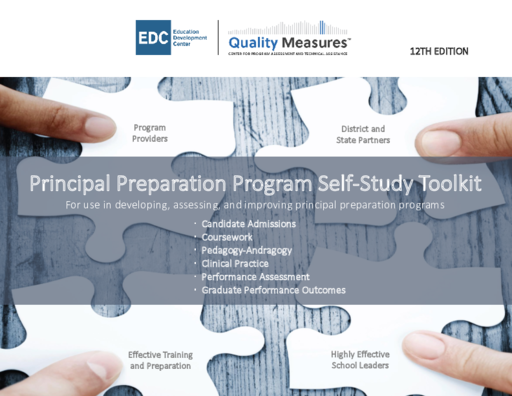Breadcrumb
- Wallace
- Reports
- Quality Measures Principal Prepa...
Quality Measures
Principal Preparation Program Self-Study Toolkit—12th Edition
- Author(s)
- C.L. King
- Publisher(s)
- Education Development Center, Inc.
Summary
How we did this
The Quality Measures Toolkit draws on nearly two decades of research about high-quality principal preparation and the preparation of equity-centered principals. This research includes hundreds of research studies, white papers, and frameworks.
The Quality Measures Toolkit seeks to help representatives of principal preparation programs and others assess and improve the quality of the training that programs provide to aspiring principals. This is the most recent update of a product originally released in 2009.
The heart of the kit is a detailed self-assessment form, with ratings on a scale of one to four. Users can fill out the form to help them identify the strengths and weaknesses of the programming. There is a rubric for each of the following program domains:
- Candidate Admissions
- Coursework
- Pedagogy-Andragogy
- Clinical Practice
- Performance Assessment
- Graduate Performance Outcomes
Each domain identifies five to seven indicators of high-quality practice. Taken together, these criteria offer a comprehensive description of high-quality preparation of equity-centered principals.
The self-assessment is designed to be conducted with the help of a “facilitator." This is a professional trained to guide participants through its parts. The toolkit could also be useful to those who want to learn about the kinds of research-based elements that make up program quality and get an idea of program improvement areas.
Key Takeaways
- The Quality Measures toolkit is a set of rubrics to assess principal preparation programs.
- It looks at programming in six areas. These include admissions, clinical practice, and coursework.
- The toolkit is designed to be used by teams so they can reflect on the program's design and implementation. Teams typically consist of program faculty members, school district representatives, and other program stakeholders.

